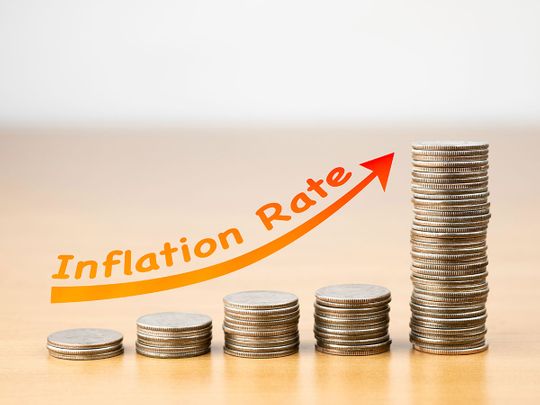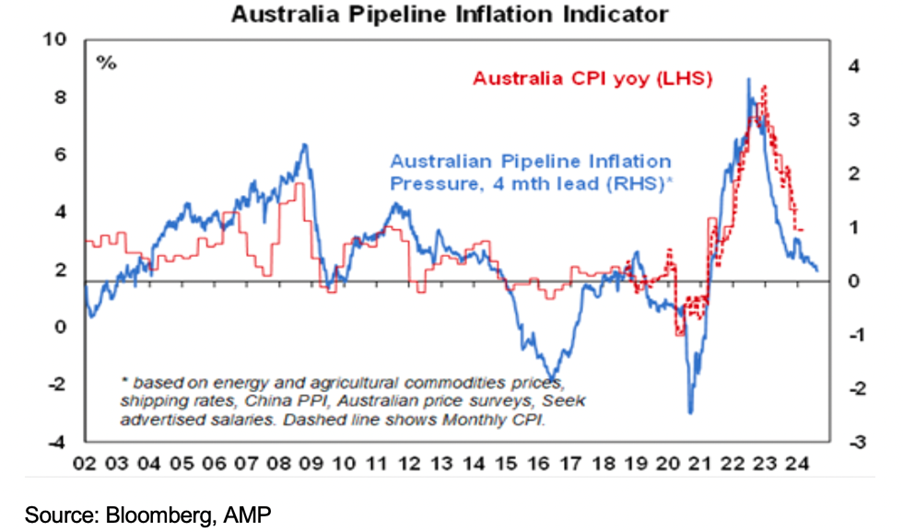

Warren Hogan, chief economic adviser to Judo Bank, is currently the top rooster or boss-cocky of economic forecasters after being most right on how high the RBA would take the cash rate. Now Hogan is tipping no cuts, and three more rate rises.
He could be right. I think he’ll be wrong. He could go from forecasting rooster today to feather duster tomorrow.
I know, respect and like Warren Hogan, who used to be chief economist at ANZ. He’d come on my old Sky Business TV program. He wasn’t always right, but forecasting isn’t easy.
His view on rates is an extreme minority view and is at odds with the CBA’s economics team and Shane Oliver at AMP, whose call on inflation has been pretty good of late.
The Guardian’s Peter Hannam has summed up the situation for interest rates nearly accurately with the headline: “Australia’s inflation rate slows less than expected to 3.6%, dimming hopes of interest rate relief.” I think the word “early” should have been there after the word ‘dimming’, to be absolutely accurate.
The 0.8% increase tipped by economists came in at 1% but I’ve been around too long to get worked up about one quarter’s data. So, let’s get all the new inflation data out in the open. Here goes:
For those worrying about a rate rise, the CBA says the following: “Monetary markets are now even pricing in a small chance - about 4% - of a rate hike by August, while pricing out almost any bet of a rate cut this year.”
That’s not the view of CBA’s economics team but what they see the money market players are thinking as determined by financial market pricing on bonds. More to the point, CBA was betting that the first rate cut would be September. However, as there’s no RBA meeting in October, it means Cup Day might bring a monetary loss for hopeful punters who racked up losses on the four-legged lottery, but they could pick up a win on an overdue rate cut!
If you’re worrying about a rate rise next week — the CBA’s economists say forget that! I think they’re on the money with that call.
Be clear on this: this is my best ‘guess’ and other economists are also guessing, though they might call it a forecast. Importantly, there are RBA meetings in June, August and September and it will be data drops over that time that will determine when rates are cut.
The RBA will be watching unemployment over the next three months. Unemployment rising faster than expected would be good for rate cuts. And then if the June quarter CPI is lower than expected (which we see at the end of July), then a rate cut in August or September could on the cards.
What I’m saying is this: if the economy is slowing faster than expected, then the RBA will cut sooner. If it’s slowing slower than expected, or starts to grow quicker than tipped, then you can forget rate cuts in 2024.
For those who want an alternative argument, have a look at Shane Oliver’s Pipeline Inflation Indicator below. It shows that the blue line inflation indicator is close to 2%, while the official CPI (the red line) is around 4%, but the red has been tracking the blue with a lag of four months.

After seeing those inflation numbers, Diana Mousina (Shane Oliver’s colleague at AMP) said this yesterday: “We think we can still see a rate cut by the end of the year as the leading indicators of softer employment growth, lower inflation and subdued consumer spending remain intact.”
In case you’re wondering about why inflation’s fall slowed in the March quarter, The Guardian talked to an economist with Moody’s Analytics, Harry Murphy Cruise, who said: “Service inflation is the main culprit holding back progress,” but he did throw in that “…inflation will keep easing from here, but progress will be slow”.
And Peter Hannam added this: “Education costs in the quarter rose 5.9%, led by a 6.5% jump for tertiary expenses. Health costs were also up 2.8% for the three months. Rents advanced 2.1%, lifting the annual increase to 7.8%, or the fastest pace in 15 years amid very low vacancy rates, the ABS said.
“Perth alone saw rents jump 9.9% from a year ago, ahead of Sydney’s 8.9% increase and 6.8% in Melbourne – though Hobart’s rents eased 0.4%.”
As we can’t build enough homes to help the rent situation, a slowing economy is the only hope for those praying for a rate cut.
Obviously, the June quarter CPI (released in late July) could bring some good inflation news if the economy looks to be slowing. That could put rate cuts back into the headlines.
Economic data drops over the next three months will tell us if Warren keeps crowing like an early morning rooster or end up roasted, with his feathers used as a duster!